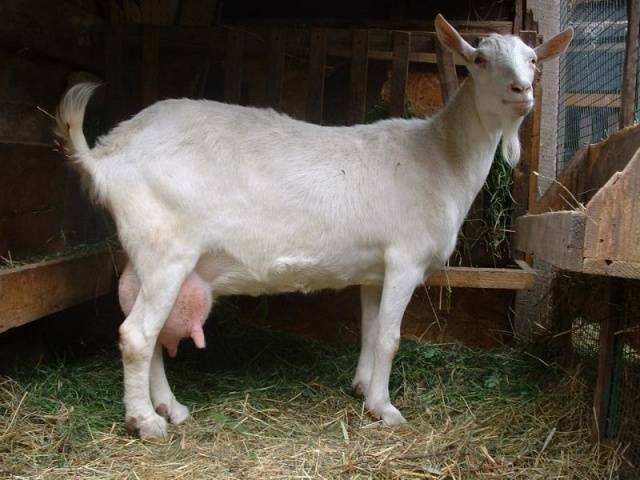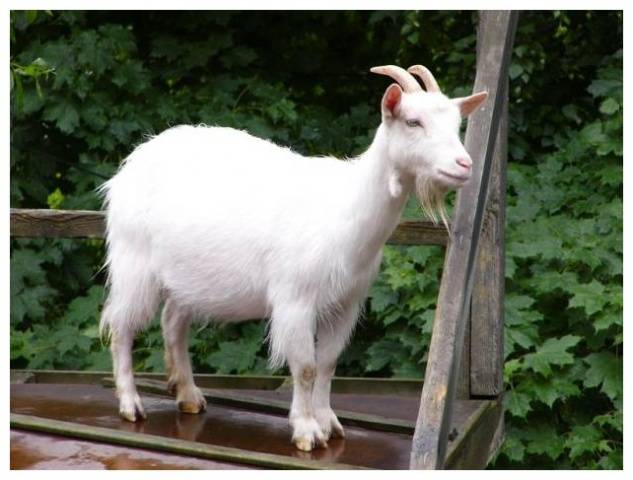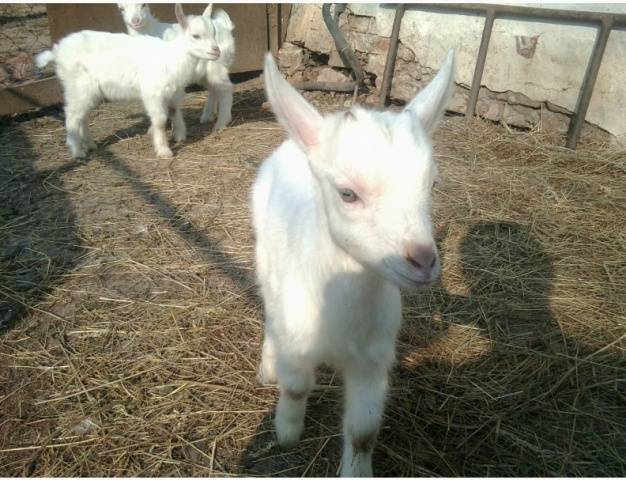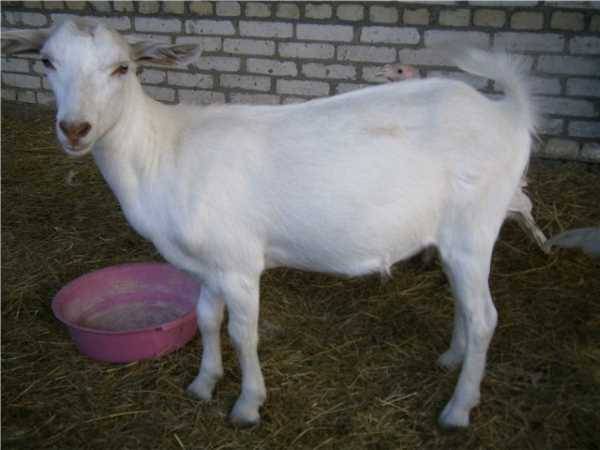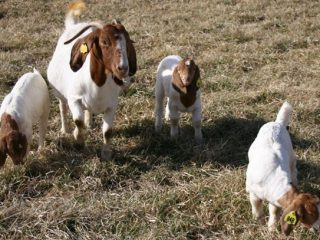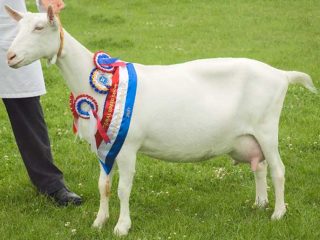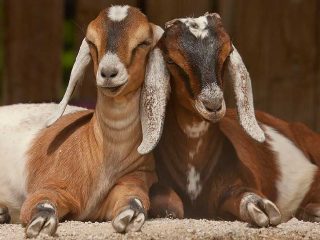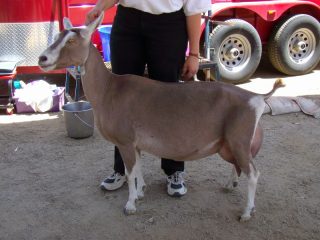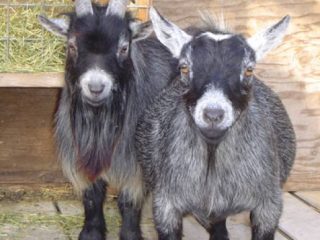Content
In Rus', goats have been bred since ancient times. And not only in villages, but also in small towns. These unpretentious animals provided milk, meat, down, and skins. Goats were especially valued for their tasty, nutritious, hypoallergenic milk. This product is similar in properties to human milk. How many children grew up strong and healthy on it! Goat milk is also beneficial for older people. Remember Robinson Crusoe: it was goats of an unknown breed that helped him survive in a difficult situation.
Unfortunately, ordinary Russian families did not dream of purebred goats. And local animals were not highly productive. Today, the Gorky breed of goats is increasingly finding a permanent place of residence in many farmsteads. It meets the requirements of goat farmers who want to get as much goat milk as possible. It sells out quickly because the quality is better than cow's milk.
History of the breed
At the end of the 19th and beginning of the 20th century, a new breed was developed. They crossed local goats (Russian goats) with Swiss ones (Saanen breed). The Swiss were brought to the Nizhny Novgorod (later Gorky region) province. The blood of foreigners had a beneficial effect on new generations; a new breed of goat appeared, which was called Gorky.
By the middle of the 20th century, goats improved their quality and productivity through selection. Gorky goats are a dairy breed.
Description
Animals are distinguished by their mobility. React to the slightest changes in the environment. There are also common interesting features.
Gorky goats are sociable, there are practically no fights between them. The person who looks after them receives a special treatment - they take him for the leader and follow him without hesitation.
When buying a goat of Gorky selection, you need to take into account the description of the breed (see photo):
- The animals' fur is smooth, not too long, pure white, although small gray markings are allowed. Pure gray goats are rare.
- The Gorky goat has a thin and light head, thin and transparent ears, and a high neck. Most often, goats are polled; goats are horned.
- Gorky breeders managed to achieve a special constitution: in a purebred goat it is strong, at the withers up to 62 cm, at the rump up to 67.
- The chest should be wide and deep in girth up to 77 cm, and the back should be straight.
- The hooves are small and neat. Legs are thin but strong
- A large belly should not sag.
- The Gorky breed stands out for its voluminous, well-developed udder. The hair is small and soft. The milk veins should move to the abdomen, forming the so-called milk wells.
Productivity
Goats of this breed are very fertile. The birth of one kid among representatives of the breed is a rare occurrence. Most often, 2 or 3 kids are born. There are also record holders who, after lambing, gave their owners four or even five lovely kids. According to statistics, a hundred Gorky goats have more than 210 babies, as cheerful and active as in the photo.
Lactation usually lasts 10 months. From one individual you can get up to half a ton of tasty and healthy milk with a fat content of 4.5 to 5.2%. Cheeses, feta cheese, butter and other dairy delights are made from it.
Some goats with increased productivity produce up to 1 ton. The only drawback of the Gorky breed is that six months after the birth of the kids, the amount of tasty products decreases.
Goat meat is no less tasty. The live weight of a goat with good care is from 43 to 50 kg, a goat weighs more - up to 65 kg. Among the Gorky goats there are also record holders - up to 75 kilograms.
But Gorky goats cannot boast of fluff. The coat is of medium length, and the down is insignificant, it is less than 10%. But goat skins are valuable: they are used to make fur coats. Dressed goats are used to make high-quality leather shoes, exquisite bindings for expensive books and other masterpieces.
Features of home care
The Gorky goat is an unpretentious animal. It adapts perfectly to the harsh Russian climate: it tolerates frost, heat, snow and rain.Today it has firmly occupied the farmsteads of many districts of the Nizhny Novgorod (formerly Gorky) region. The Ivanovo and Vladimir regions, the Middle Volga region, Chuvashia, and Tatarstan are also not far behind; goats are held in high esteem here too.
Feeding
In the summer, goats of the Gorky breed are transferred to pasture. Even a small grass stand is available for food. Any weeds and nettles are used. When breeding these domestic animals, you need to remember that staying in one place of pasture is unacceptable for them by nature.
In winter, it is necessary to provide hay, brooms from deciduous and coniferous trees. Goats eat succulent food well, so you need to grow potatoes, carrots, beets, pumpkins and other vegetables. Goats do not disdain flour mash, into which you can add food scraps from the table. At any time of the year, animals should have clean water. In winter, you cannot drink cold water; it needs to be slightly warmed.
Room arrangement
In winter, the animals are driven into a room called a goat shed. It must have shelves with bridges. Since the wild ancestors of the entire goat population love to climb mountains, it is necessary to arrange elevations in the courtyard so that the Gorky goats can train.
No stoves are required in the goat shed; the animals will warm the room with their breath. But drafts are unacceptable: the descendants of the Annen breed get sick. You need to monitor the air humidity and its cleanliness. The goat's rue needs to be ventilated daily in winter.
Video about the features of care in winter:
Hygiene
The pen and goat shed should be clean and dry.Look at the photo: straw bedding is an excellent option for a goat from the Gorky breed. Otherwise, dirt and dampness will have a negative impact on the wool. Lice and bedbugs can live in dirty fur. Even if there are no pests, animals of Gorky selection are treated for preventive purposes with special preparations.
Goat pests are found not only on the skin, but also inside the body - these are helminths. Animals are given medications recommended by the veterinarian.
Conclusion
Today, more and more villagers prefer to breed Gorky goats. With proper care, animal owners provide themselves and their loved ones with tender meat and nutritious milk. They can replenish the herd in a timely manner, obtaining strong and healthy kids at minimal cost. And how much fun little Gorky goats bring to children: they put on real circus performances!
